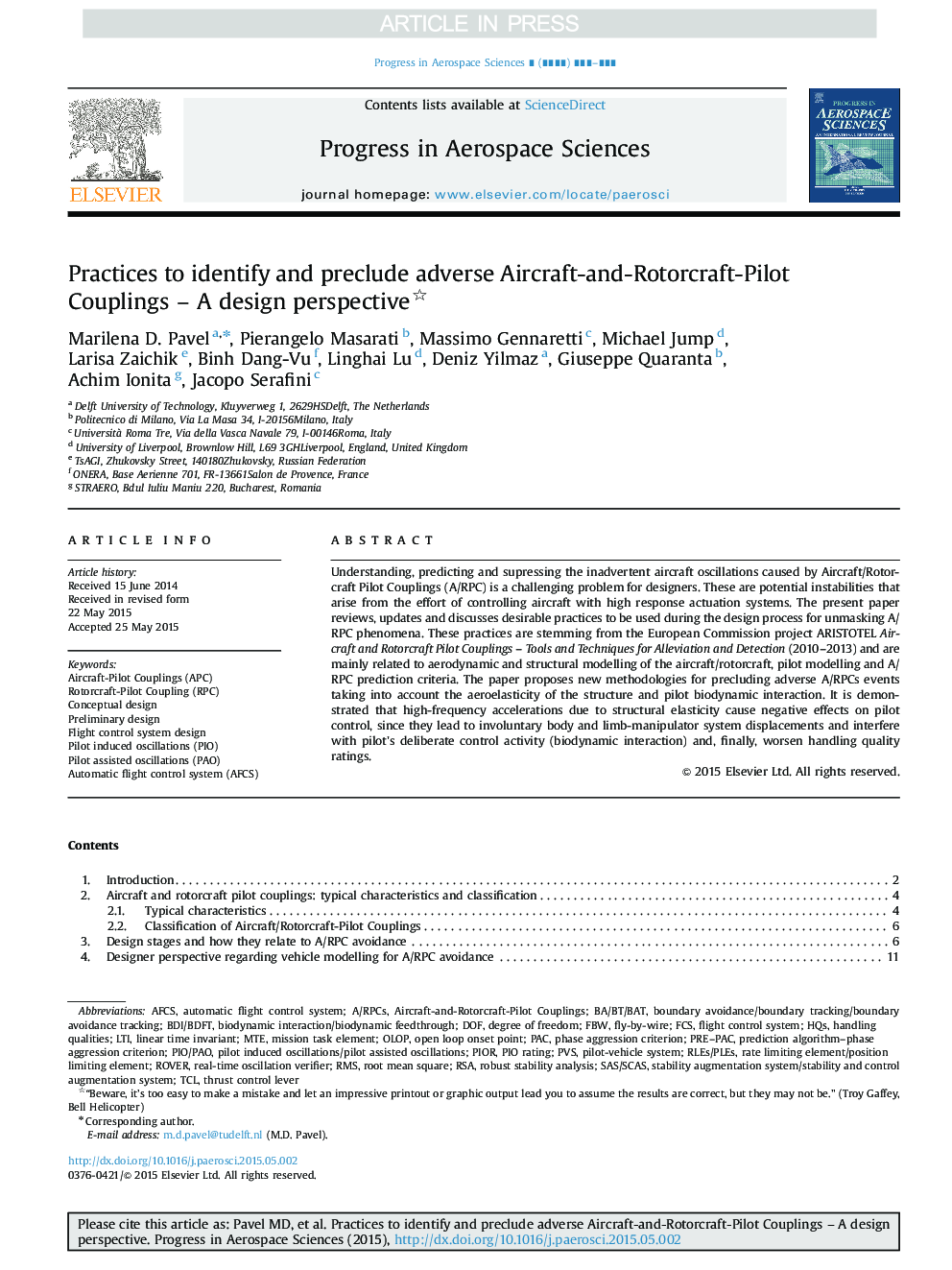| Article ID | Journal | Published Year | Pages | File Type |
|---|---|---|---|---|
| 8059103 | Progress in Aerospace Sciences | 2015 | 35 Pages |
Abstract
Understanding, predicting and supressing the inadvertent aircraft oscillations caused by Aircraft/Rotorcraft Pilot Couplings (A/RPC) is a challenging problem for designers. These are potential instabilities that arise from the effort of controlling aircraft with high response actuation systems. The present paper reviews, updates and discusses desirable practices to be used during the design process for unmasking A/RPC phenomena. These practices are stemming from the European Commission project ARISTOTEL Aircraft and Rotorcraft Pilot Couplings - Tools and Techniques for Alleviation and Detection (2010-2013) and are mainly related to aerodynamic and structural modelling of the aircraft/rotorcraft, pilot modelling and A/RPC prediction criteria. The paper proposes new methodologies for precluding adverse A/RPCs events taking into account the aeroelasticity of the structure and pilot biodynamic interaction. It is demonstrated that high-frequency accelerations due to structural elasticity cause negative effects on pilot control, since they lead to involuntary body and limb-manipulator system displacements and interfere with pilot's deliberate control activity (biodynamic interaction) and, finally, worsen handling quality ratings.
Keywords
Related Topics
Physical Sciences and Engineering
Engineering
Aerospace Engineering
Authors
Marilena D. Pavel, Pierangelo Masarati, Massimo Gennaretti, Michael Jump, Larisa Zaichik, Binh Dang-Vu, Linghai Lu, Deniz Yilmaz, Giuseppe Quaranta, Achim Ionita, Jacopo Serafini,
